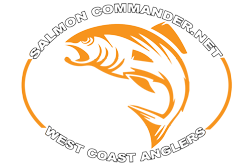The largest recreational fishery in Alaska is supported by the Kenai River, a glacially turbid stream draining the central Kenai Peninsula (originating at the outlet of Kenai Lake in Cooper Landing). This popular river supports excellent runs of androgynous (sea-run) King, silver, sockeye and pink salmon, both resident (exclusively fresh water) and androgynous Dolly Varden char, in addition to resident rainbow trout. Lake trout are common in the Kenai and Skilak Lakes of the Kenai River System.KING (CHINOOK) SALMON. 48,343 Kings entered the Kenai River in 2010. The very name “King” connotes a large fish, but not all King salmon caught are necessarily large. A combination of genetics, food availability and the life history of each fish determine the size of a salmon. But the Kenai River boasts more than its fair share of “King” salmon both in name and size; the world record (sport caught) King salmon was taken in 1985 from the Kenai River and weighed in at a whopping 97 pounds and 4 ounces.Two distinct runs represent the largest freshwater King salmon fishery in Alaska. The early run usually begins to enter the Kenai River around mid-May, reaching a peak in June and finishing by the end of the month. Fish from the late run enter the river in early July and provide excellent fishing until the end of July.
King Salmon caught on the Kenai River in Alaska.
Bring along an ample supply of patience and courtesy on your Kenai King salmon fishing trip, because the Kenai River King salmon fishery is extremely popular and on occasion can become a bit crowded. Operate your boat in accordance with the “rules of the road” and extend to your fellow angler the same courtesies you would like to receive. Give boats with “fish on” the widest berth possible to avoid line tangles. At its best, King salmon fishing is not a sport recommended for the impatient. On the average it requires approximately 31 hours of fishing before an angler boats a king. However, you can improve your chances by hiring a guide. On the Kenai River, guided anglers are about three times as efficient as non-guided anglers.
